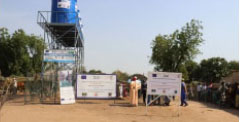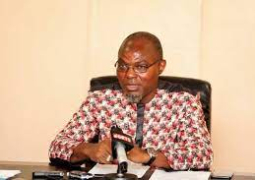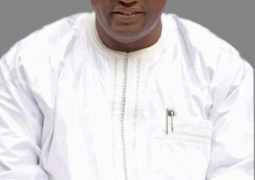
So far there are 33 countries on the list from the African continent alone. Unfortunately, familiar faces continued to persist.
As far as the West African sub region is concerned, those on the list include: Benin, Burkina Faso, Cameroon, Ghana, Ivory Coast, Guinea, Guinea-Bissau, Liberia, Mali, Mauritania, Niger, Sierra Leone and Togo.
Responding to enquiries from The Point, an economic expert familiar with the “listing and recommendation process” argued that “there are stringent criteria for countries to fulfill”.
The expert added: “Inadequate and insufficient” debt relief for countries means that “they will spend more on not only servicing debts, but also on other burdens…rather than on actively investing in programs to reduce or minimise poverty”.
On the political front however, specialists continued to stress that “political instability, upheaval, military coup and corruption” are some of the factors affecting economic growth.
According to the professionals, “The Gambia under former dictator Yahya Jammeh also contributed to constant downgrading and relegation of the country’s economic standard…It was mainly due to “appalling human right abuses with impunity; misuse of public funds without any fear of repercussion”.
However at the present moment, “projects and reforms” embarked by the current government as well as the “ongoing plans and developments”, is likely to eventually uplift the county’s economic growth.
Regarding stability, Geoffrey Onyeama, Nigerian foreign minister, during a recent official visit to Europe, also stressed that “term limit is an ECOWAS constitutional requirement officially signed by member states and thus violators would face the consequences”.
There is no doubt that the HIPC’s definition of debt sustainability is also encountering criticism. Some experts contest that the “debt-to-export and debt-to-government-revenues criteria are illogical and sometimes restraining”.
Also, critics argued that the HIPC initiative has “woefully failed to resolve the debt crisis” in the world’s poorest countries and thus other methods should be applied.
Consequently, by trying to remedy its deficiencies, officials are expanding its definition of unsustainable debts. They are currently making greater relief available unlike before. It is meant to support more countries in a more prompt and efficient manner.
This correspondent learnt that the introduction of the so-called “topping up” which is an important mechanism to increase effectiveness will be helpful to countries like The Gambia in order to address “unexpected economic setbacks due to external factors”.
The HIPC Initiative was launched in 1996 by the IMF and World Bank.





